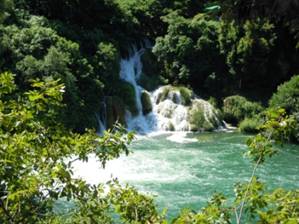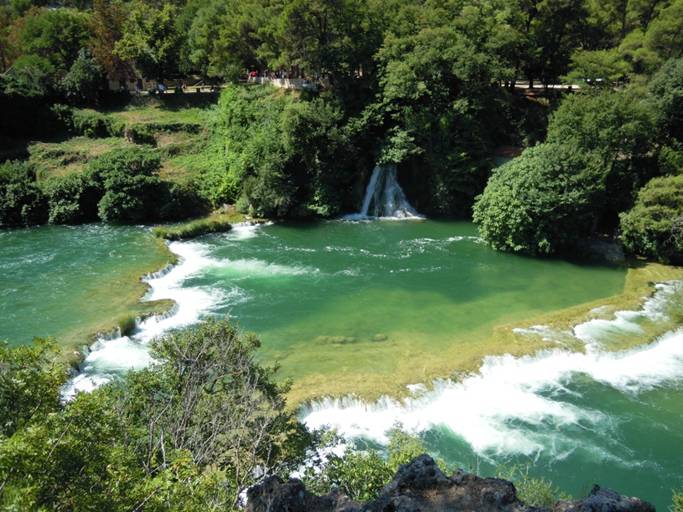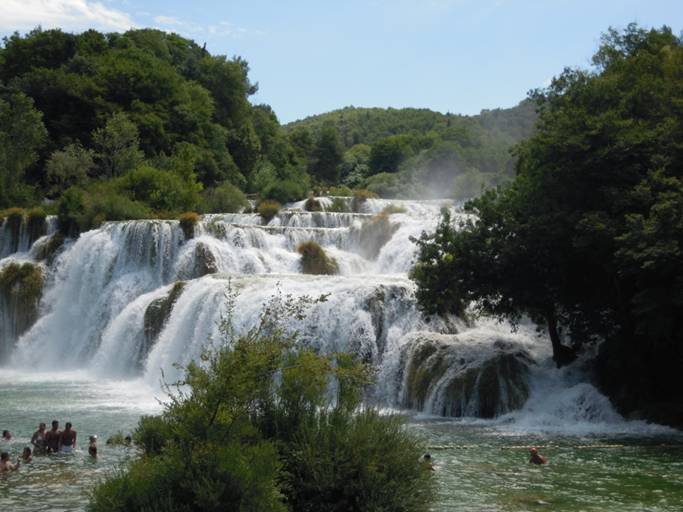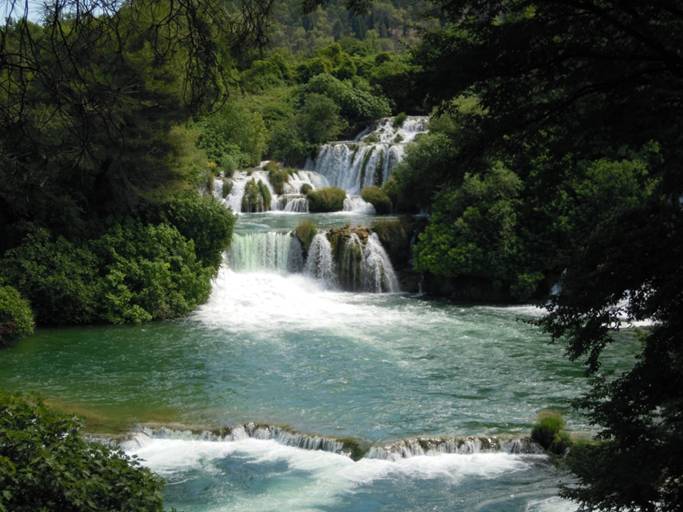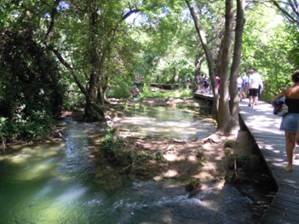Inland to Krka Waterfalls

|
One of the real reasons we came to Sibenik was to see the
waterfalls at the national park. The falls are located not far from
Sibenik and can be reached by boat up the river or by taxi. When taking a
boat it requires a transfer to the park boats which complete the final distance
to the falls. By taxi you get to the top of the falls, need to take a
park bus 4 kilometers down to the upper part of the falls. There is also
the possibility to walk one kilometer to the same point. Obviously the
walking path is direct while the bus must meander along a narrow road down,
stopping along the way to squeeze past other busses coming up. It all
worked but it is a bit hair raising looking down the edge of the cliff the bus
is negotiating. The waterfalls has been a national park for a few
decades. The falls are actually a series of smaller falls that cascade
down mixed with pools of water between the drops. This is one very
interesting to see since most of the coastal parts of Croatia are arid.
Here inside the park there is aquatic life and deciduous trees instead of
conifers. The falls are also constantly changing from the deposits of
calcium carbonate mixed with algae. The form little dams and blocks to
add to the waterfalls. In fact these are thousands of years old and
continue to grow about 3 mm per year. These falls are also a place for initial industrial
activity. Of course there were the initial water powered mills, some
which are still in operation today as a tourist attraction. You can buy
corn meal from these grind stone mills. This was also the site of almost the first hydroelectric
plant. It started just a few days after the Niagara Falls plant.
But this facility actually sent electricity to the city of Sibenik while Niagara
Falls did not have the infrastructure in place to utilize the power till later
on. The national Park is a very well run place with ample
parking even for the large Holiday weekend crowds. There are also boat
rides up river into the large lakes and the associated castles and points of
interest. We did not take this as it is a three hour trip up and back. A few miles below the falls is a marina for sailboats and
smaller powerboats to berth and travel upriver on the park boats. This
marina stays open year round and you can overwinter a boat here in freshwater
instead of the usually saltwater at nearly all marinas.
One of the falls with travertine on the rocks
Additional travertines making dams in the waterfall
If there is water there are people in it. Swimming
here is a big thing, just to say you did it more than anything else. Not
very warm and the bottom is rocky and uneven.
Another shot just above the swimming area. Note the
line of floats marking off the swimming area. They no longer allow people
onto the falls.
Picture from the area of the grist mill looking upstream.
At the upper part of the falls they installed boardwalks for
a one hour walk through the falls. Very good idea as the ground is clay
and very slippery when wet. They are still working on the walk so at
places there are just foundation columns installed or rafters only with no
floor structure. Getting better all the time, just be patient. At the bottom of the falls is a little park area with an
outdoor grill restaurant. We thought it would be slow service and bad
food but to our surprise the service was very good and the food not bad for a
tourist place. Beer, brats and Pomme Fritts. What can be bad about
that. Ecologically this place is a haven for birds, fish and
flora. They have all sorts of stats but let’s say that it is a very
important ecosystem for this country to preserve as they are currently doing. |
